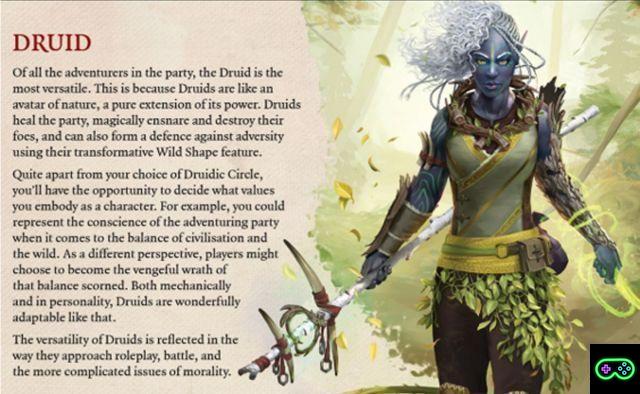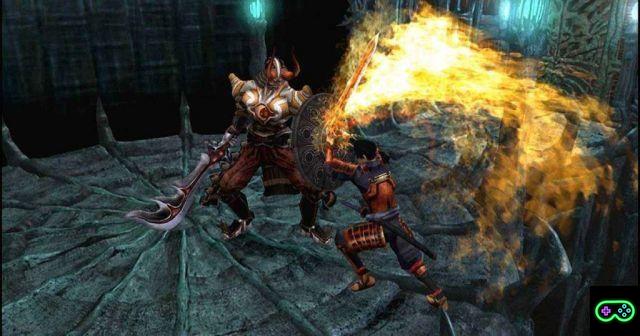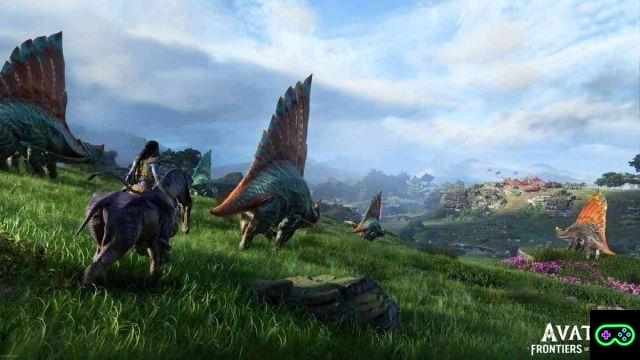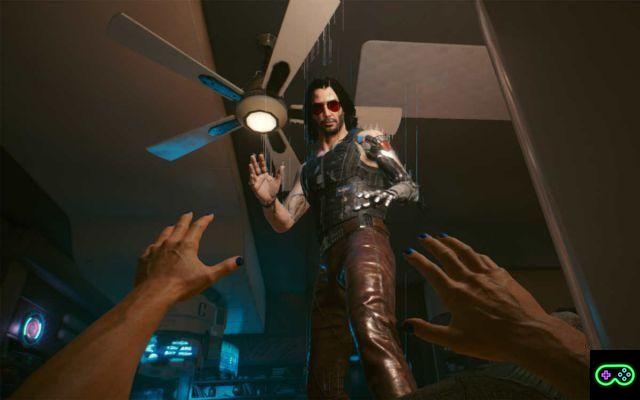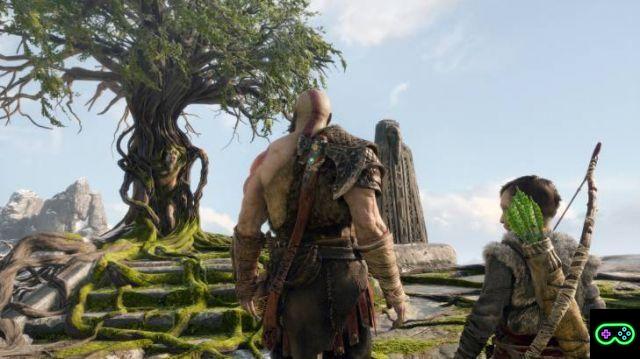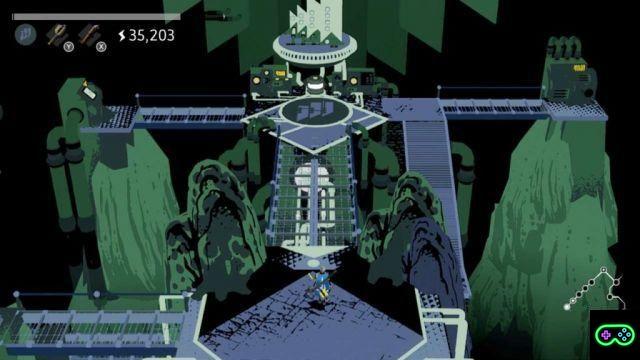I have to tell the truth, when they gave me a chance to review Tales Of Arise I have been really happy.
Happy because the Tales Of saga, despite the enormous limitations it has been carrying for years and years, is one of those guilty pleasures that I think about every now and then with great nostalgia and great love.
Tales Of Fantasy (very first chapter of the saga), for example, is a video game that I know literally by heart from the number of times I've finished it.
Tales Of Eternia (or Tales Of Destiny 2 for those of you who lived through the late nineties in America) is another video game that I have sweet great memories of, thanks to a very interesting worldbuilding and an even more refined combat system than its predecessor.
Also of Tales Of Graces F on PS3 I have good memories: a video game with a combat system incredibly technical, endowed with a gameplay of enviable depth ditched by characters on the verge of denunciation.
Yes, because while I wasn't playing the Tales, the anime games took hold and more and more in the world of video games the typical stylistic features of Japanese animation peeped out also in terms of characterization and construction of the characters.
Bandai Namco, with this brand of his, could not fail to participate in this bandwagon.
The Tales saga, after the first chapters also mature for the average of the time, had turned into an action RPG saga that is interesting, but characterized by narratives and characters capable of making anyone get an ulcer has passed the age of twenty-five.
The arrival of Tales Of Berseria in 2016 he had shown a certain desire for renewal, at least from a narrative point of view, with a more violent and mature title, capable in any case of keeping the brand's narrative styles intact.
A mancare it was technical features: Berseria was still a video game for Playstation 3 catapulted on PC e PS4. It was enough to have played 10 minutes a Dragon Quest XI to understand that, in terms of inventiveness and technique, much more could be done.
Fortunately, Tales Of Arise seems to be the right title for reverse this style.
I want to fight forever
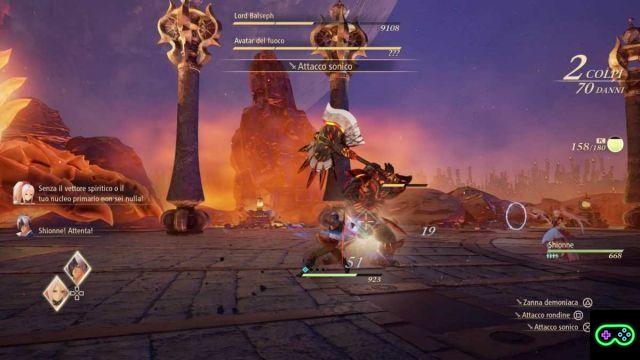
Tales Of Arise and the seventeenth chapter of a saga that has been going on for over twenty-five years and is a video game full of a notable desire to renew itself.
Because real-time fights ok, but it was undoubtedly a bit ugly to always get back into the game with a more or less technical variation (and more or less three-dimensional) of the linear motion battle system set up by Phantasia on Super nintendo.
From the first demo made playable to the public, fortunately, everything was clear: technically compared to the old chapters we are on different qualitative levels and, ludically speaking, Tales Of Arise is a superfine product, able to rival even with incredible gameplay titles like Final Fantasy 7 Remake.
From a purely playful point of view Tales Of Arise is a marvel.
The battle system put together by Bandai Namco for the occasion is perhaps one of the best hybrid action RPGs on the market, thanks to a large number of overlapping mechanics, a rather high skill ceiling and a great degree of customization.
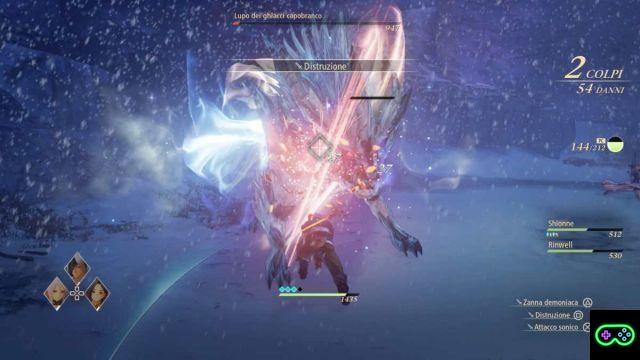
The battles take place in three-dimensional arenas (alas always flat and without verticality, it must be said immediately) where the player finds himself in control of one of the six components of the party. Each character has his own style of play, his own unique mechanics, his usefulness in battles
There are characters who attack mainly from a distance and who have excellent zoning characteristics against flying or aggressive opponents, characters capable of absorbing magical attacks to then use them, enhanced, against the opponents.
The swordsman protagonist (whose name we do not reveal) has a huge set of techniques with which to be able to attack opponents capable of giving a remarkable dynamism to the battles. Between stun attacks, air launchers, air attacks, automatic combos, horizontal slashes it becomes really difficult to complain about the variety of the offensive proposal.
The use of all these techniques is governed by a resource called BP.
This resource recharges automatically during battles, especially in moments of defense or pause. This choice asks the player to learn how to master the defensive mechanics, including parrying, counterattacking, dodging and so on.
From the offensive point of view, however, the variety is even higher because in addition to his own set of techniques (freely interchangeable during the course of the battle by pausing) the player will have the opportunity to get help from his supporting actors with targeted attacks and techniques, sometimes even linked only to the pressure of one of the directional buttons of the pad .
Each technique is useful in a specific moment of the clash, giving the whole a very interesting almost tactical breath at high levels of difficulty.
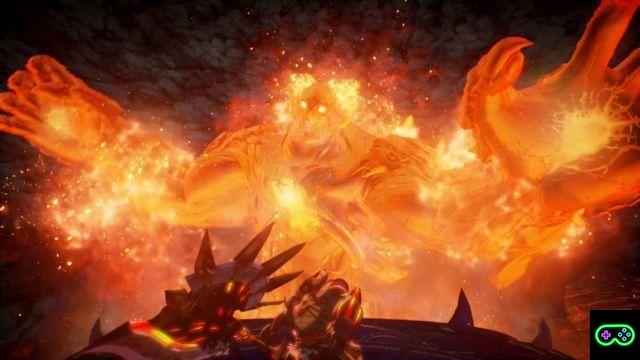
All this goodness is also balanced for difficulty and gives its best in boss battles, clashes that can last several minutes imbued with a dynamism rare for the series itself.
Bosses are much more resilient, feature different phases with unique attacks and ask the player to strive to make the most of the weak points. Specifically, this last feature further refines the playful proposal by asking the player to abandon button mashing to make room for more studied or reasoned actions.
The presence of cure points, a resource that limits the number of healing skills that can be used during the course of battles, further increases the sense of tension making the clashes really very interesting.
Now take everything we've said and add the fact that the player-controllable character is interchangeable at any time. The end result is a battle system that sometimes becomes very loud and confusing but that it never stops being fun, an element of fundamental importance for a video game.
Winning team do not change (or change little)
All the battle system in question is regulated by a very classic leveling system, with characters leveling up by gaining experience points and learning new techniques by gaining skill points.
The management of character growth is pretty minimal thanks to the system of titles, this time integrated into the statistical aspect of the system: performing certain actions a given number of times or continuing each character in the story unlock a new title.
Each of them carries gods with them passive bonuses, skills to be learned and advantages following the completion of the degree; a simple but effective system wanting to summarize.
Il equipment system, kind of like the character growth system, stays on simple shores offering three slots per character. Weapons and accessories are objects that can be crafted with materials that are obtained by exploring the game world while armor must be purchased from merchants (or found around).
While weapon crafting is extremely simple, that of accessories has a degree greater depth due to the possibility of enhancing objects already created by distilling the materials possessed. In this way it is possible to add additional skills and characteristics to what we have created in the past, personalizing the experience a little.
It is clear that the system is not exactly as varied, staying very far from layered crafting systems like that of Xenoblade Chronicles but, in our opinion, its simplicity allows the player to continue to focus on what matters most: the clashes.
Explore, jump, collect, swim, have fun
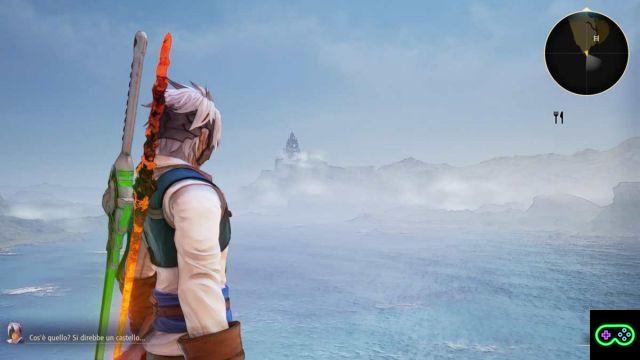
What happens in Tales Of Arise when you don't clap hands with aggressive local wildlife?
The title from Bandai Namco seasons its battles with a three-dimensional Japanese RPG structure allowing the player to explore rather large maps, always full of details (avoiding the problems of open world titles).
Between one tour and another, of course, we will also find dungeons to explore from top to bottom, with some puzzle of sorts to vary the formula without upsetting the balance of the game.
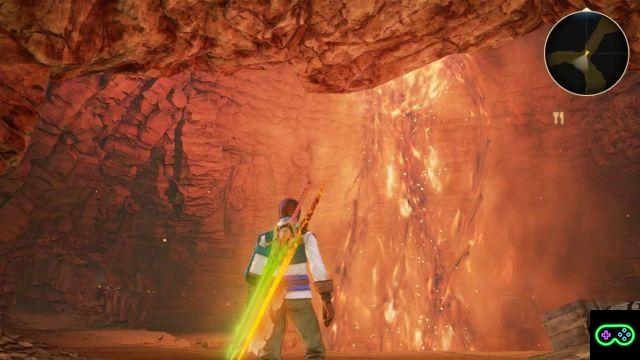
The level design of dungeons and maps is functional to the theme of the journey that the narrative suggests but it's not as fun as it might. The introduction of the jump within the exploration, for example, leads to very little new: some chests are reachable only by jumping, it is true, but there are no puzzles or tricks that allow the player to make the most of this feature.
Interesting the idea of the developers of hide some portions of the map or crates behind the PC expense, forcing the player to choose whether to risk a little more during the course of the next few battles or ignore a piece of content. This is not enough to make a sensation disappear: the lack of mysteries or secrets is obvious and, the presence of very generic secondary quests, does not help the player to further enhance the efforts made by the software house in outlining the game world.
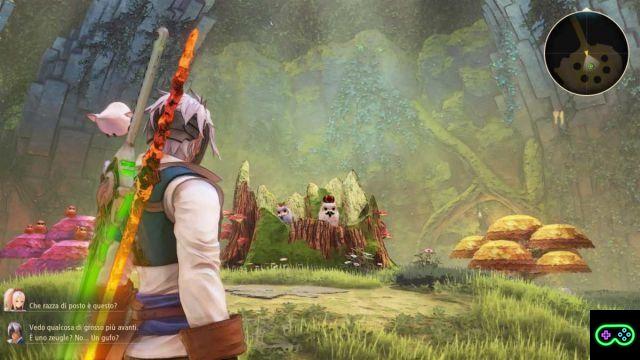
Last point related to the exploratory component: owl hunting.
In almost all the maps, almost to want to make a noise to the kerotan frogs of Metal Gear Solid 3, it is possible to find a cute owl hiding in the most unlikely places.
For each owl found, the player will be able to get their hands on a funny piece of clothing, in order to further customize the external appearance of the players. Even here, nothing to tear your hair about (mind you) but it is still an extra element that gives a touch of lightheartedness to a dark adventure.
Here, yes, let's talk about history.
History
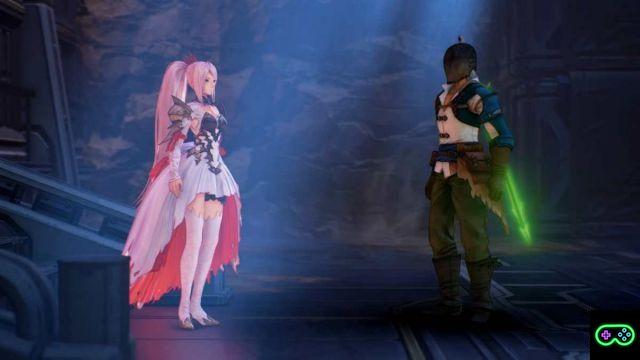
Tales Of Arise is the story of a conflict and two irreconcilable worlds.
On the one hand Dahna, the paradise of the gods and the richness of its soil, on the other we find the Renani, an alien humanoid population capable of using the astral arts, equipped with cutting-edge technology and with unprecedented war power, also accomplices Zeugle creatures.
Within one night the inner kingdom of Dahna falls under the clutches of the Renani, starting a bloody dominion. The Dahnians come enslaved and used for the most disparate tasksi according to the kingdom in which they are located; for over three hundred years nothing can dent this status quo.
Fast Forward to today: we are a Orbus Calaglia, a flamboyant former kingdom of the Dahnian empire now controlled by Balseph, the wild beast.
The latter's dominion over the primary core of fire (a powerful artifact that harvests the astral energy of the area's fire) makes rebellions impossible: the locals have been forced to die for generations obtaining resources, in a vicious circle of slavery and abuse.
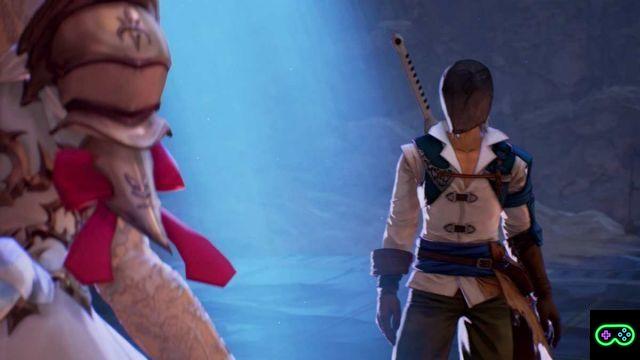
The daring escape of a Renana called Shionne scatter the cards on the table, giving our protagonist the iron mask (it will not take long to find out who and what is hidden under this artifact) the strength necessary to try to raise his head.
Thus begins the journey made up of revenge and mysteries that will see our two characters bring together new faces and figures, giving an answer to the many mysteries that animate the game world and, accomplices the numerous secondary scenes (called skit), painting a close-knit and effective party.
Shionne is a decently written character, still too much the son of certain Japanese stereotypes (such as the tsundere jokes that we would have gladly done without) but undoubtedly successful, also thanks to the pleasant (but waifuiating) character design.
The protagonist despite the air of inevitable chosen one who will save the world typical of Japanese role-playing games, is characterized in a pleasant way with a degree of maturity on average unexpected for the target to which the title refers.
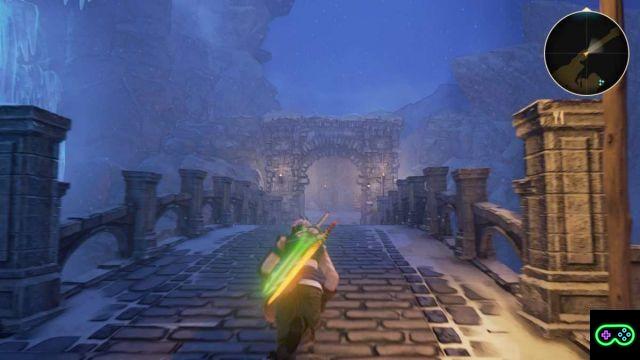
Specifically, we were positively impressed by the aforementioned skits.
This time, in fact, they were made using a technique reminiscent of the cartoon picture in picture. Thanks to this choice the developers have managed to make these exchanges between more dynamic supporting actors without spending too many resources that would have removed the value of the main events, also succeeding in the difficult task of putting on the plate the immense amount of information that animates valuable worldbuilding.
Tales Of Arisemoreover, it has aexcellent localization in español which makes the adventure accessible even to non-English speakers. Localization is accompanied by the usual double dubbing selectable between English and Japanese.
Note of merit for the English dubbing, spot on and functional.
Thanks, Unreal Engine 4
Tales Of Arise, strong in the desire to renew revealed by Bandai Namco with Berseria, is the first chapter of the saga made with non-proprietary graphics engine.
For the occasion Bandai Namco the now solid Unreal Engine 4, using the cel-shading technique for achieve a Japanese anime aesthetic which immediately returns pleasant sensations at a glance.
The title, which we tested Playstation 4, is visually very pleasing with highly detailed polygonal models e quite convincing character animations.
The graphics engine in battle shows all his muscles, between bombastic lighting effects and spectacular explosions without ever falling below thirty frames.
Curiously we were very impressed (positively) by the speed of the PS4 uploads which, within a couple of seconds, allow the transition between battle and exploration.
The soundtrack created by Motoi Sakuraba, historical composer of the series and a rather important name in today's panorama of video game music.
Sakuraba, instead of engaging in producing a soundtrack with very Japanese tones, with strong melodic arias and bucolic accompaniments, this time decides that he wants to focus on the epiccreating pieces that closely recall the productions of John Williams, the composer of the soundtrack of Star Wars.
The final result is pleasant, perhaps alienating for a historical fan of the saga, but of undoubted value; the pieces are mainly orchestral, which makes them powerful and epic. The arrangements, made with taste, give the narrative an epic-like tone that goes well with the narrative.
Final judgement
Tales Of Arise is the best Tales Of in years and, consequently, one of the best JPRG of the year. Technically and aesthetically we are there, also thanks to a wise use of the Unreal Engine 4 while playfully speaking we are dealing with one of the best battle systems that the recent history of ARPGs remembers. The battles are fun and spectacular, offering multiple mechanics to interface with for obvious fun. In the production there are still problems of a narrative nature or level design, with unnatural behaviors of the characters deriving from the past of the saga and with dungeons that could have been created with greater care but, in any case, all this does not hinder the use of a title that will drive you crazy fans and fall in love with many others.




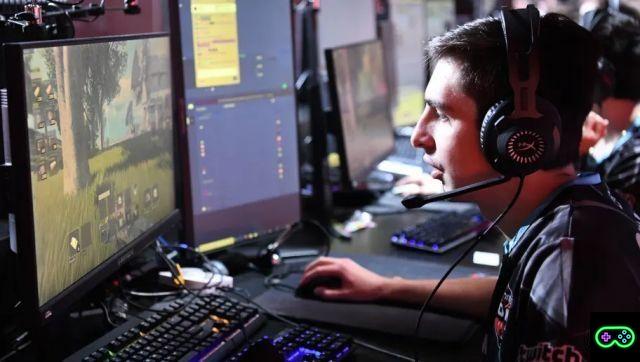
![[The Bear's Lair] God of War: Betrayal and Greek mythology](/images/posts/17432d3b12ecfec44b0b855d20c7520f-0.jpg)



